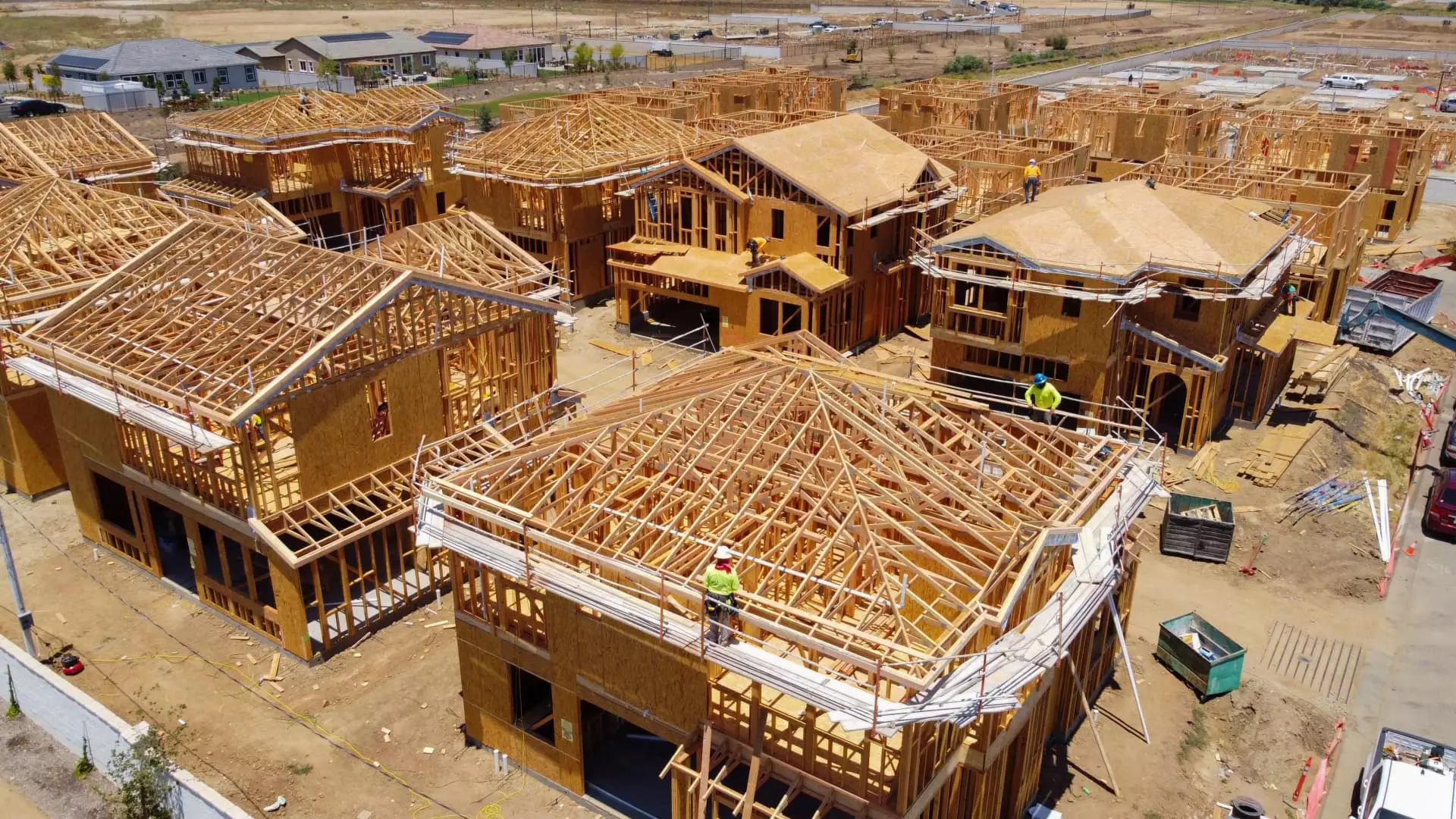The High Stakes of Anticipated Interest Rate Cuts: A Closer Look at Homebuilder Stocks

As the financial world eagerly awaits a long-anticipated interest rate cut from the Federal Reserve, homebuilder stocks have been experiencing a notable ascent. Since October 2023, expectations around interest rate stabilization have fostered enthusiasm among investors. However, as RBC Capital Markets analyst Mike Dahl highlights, it’s crucial to approach this scenario with caution. The stocks have been adjusted upwards on the assumption of impending rate cuts, leaving little margin for error should these expectations not materialize as anticipated.
The rise in homebuilder stocks reflects not only investor optimism but also an understanding of the broader economic climate, which has shown some signs of stabilizing inflation. With the S&P Homebuilders ETF (XHB) surging nearly 26% in 2024, and some companies like Toll Brothers seeing an exceptional 46% increase this year, it’s tempting to view this as a robust recovery. However, beneath this surface optimism lies a more complex and potentially volatile landscape.
Dahl’s caution about overzealous stock valuations cannot be overstated. He indicates that while certain homebuilder stocks are enjoying impressive gains, the fundamentals of the industry remain inconsistent. For instance, names like Lennar and KB Home are highlighted for their potentially inflated valuations. With a significant surge in their stock prices—24% and 38% respectively in 2024—investors need to question whether these stocks can maintain their flight or if they are set for a correction.
Indeed, the historical average of homebuilder stock gains during the past five Federal Reserve cycles points to a far more tempered environment, with 12-month gains languishing around just 4%. Even in periods dubbed as ‘soft landings,’ the average gain hangs around 19%. Such figures suggest that while current investor optimism is high, the market may be sailing into a precarious situation that could turn unfavorable if economic indicators shift.
As the market speculation intensifies leading up to the Fed’s policy meeting, attention is drawn to the potential magnitude of the interest rate cut. The CME Group’s FedWatch tool hints at a 59% probability for a 50-basis point cut, while a smaller 25-basis-point cut reflects just 41%. While higher interest cuts might sound good in theory, economists like Dahl caution against this aggressive stance. A deeper cut could easily signal substantial economic deterioration—a potential red flag for lasting market stability.
Incremental shifts in consumer and employment data form the crux of economist concerns, highlighting that stock performance historically hinges on the effectiveness of rate cuts in averting recessions. This precarious balancing act poses a dilemma: aggressive cuts may discourage immediate economic distress but could also indicate deeper systemic fragility.
The Housing Market’s Mixed Signals
Critical insights from analysts such as Barclays’ Matthew Bouley emphasize the importance of consumer reactions to falling mortgage rates. Rising inventories of both existing and new single-family homes indicate a potential oversupply in the market. Furthermore, stagnant housing starts and only moderate improvements in weekly mortgage applications reflect a recovery that is less robust than it appears.
Nevertheless, encouraging signs such as an 11% month-over-month increase in new home sales suggest that recent declines in mortgage rates are enticing buyers back into the market. Yet, for every positive indicator, there’s a sour backdrop, such as ongoing challenges with housing affordability that demand constant attention from builders.
The largest builders, such as D.R. Horton, seem better positioned for resilience in this tumultuous market. Their extensive geographic and buyer demographic reach, along with the capacity to offer incentives, could soften potential impacts from macroeconomic headwinds. However, concerns linger that the current stock valuation may not genuinely reflect reality, raising the question of how effectively these companies can adapt.
Overall, while optimism abounds regarding the broader potential positive economic impact of anticipated interest rate cuts, the reality is significantly more complicated. Homebuilder stocks have elevated expectations that could render them particularly vulnerable to distress if economic conditions worsen. Investors are cautioned to carefully evaluate current valuations against a backdrop of mixed economic signals and potential disruptions. As the Federal Reserve approaches its next monetary policy meeting, it is clear that careful navigation and informed strategies will be essential for weathering the rough seas ahead in the construction and home-buying markets.





